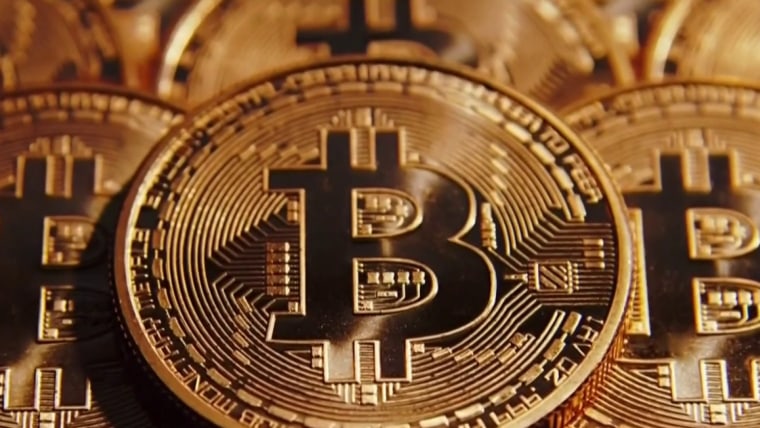[ad_1]
At any explicit second, 1000’s of computer systems all over the world are buzzing away, crunching complicated math issues that create and maintain bitcoin.
This community provides bitcoin its enchantment: decentralized, all the time on and simply tradeable. But it surely additionally means the community is continually utilizing vitality — a sticking level for lots of the cryptocurrency’s skeptics and critics. And it isn’t only a bitcoin downside. Different cryptocurrencies and blockchains together with Ethereum have related challenges.
The controversy about bitcoin’s environmental impression was elevated earlier this month when Tesla CEO Elon Musk, as soon as some of the notable bitcoin boosters, stated his firm would not settle for it for the acquisition of autos. He cited the usage of fossil fuels for bitcoin mining as a purpose.
It is a problem that some blockchain evangelists assume they will clear up — and probably open the door to extra widespread adoption of the expertise.
“It is a basic breakthrough for humanity, we are able to now do issues that we couldn’t do in any other case,” stated Danny Ryan, a researcher on the Ethereum Basis, of decentralized pc methods and blockchain expertise. “When people discover new instruments they use them. So this decentralized factor, this crypto factor, it isn’t going wherever, however there’s additionally a a lot better approach to do it.”
The higher means known as proof of stake. And for some cryptocurrencies, it is already in use.
Proof of work
To grasp the implications of proof of stake, it is necessary to first element the way in which bitcoin at present works: a system known as proof of labor.
The concept for bitcoin is mostly acknowledged to have emerged out of a white paper published in 2008 by an nameless writer who used the pseudonym Satoshi Nakamoto. It laid out the thought for proof of labor, through which separate events tackle the duty of verifying the data and transactions saved in a blockchain.
The system is completely decentralized, which means that many computer systems from all around the world take part within the blockchain verification course of. The underlying code of the bitcoin system governs the method, moderately than any central authority.
With the intention to take part, bitcoin miners want to make use of specifically constructed computer systems and have entry to numerous vitality. At present, these computer systems are in brief provide however in excessive demand. At their core are specialised pc chips and semiconductors, each of that are in a world scarcity that has already affected the manufacturing of vehicles, laptops and smartphones.
The decentralized community of specialised computer systems, known as “rigs” or “mining rigs,” works arduous to unravel very complicated mathematical equations. By fixing the equation, they confirm that the blockchain is correct. Individuals who take part on this verification course of are known as miners and they’re rewarded for his or her efforts within the type of cryptocurrency, on this case, bitcoin.
The method is vitality intensive. With the intention to confirm that the document is correct, so-called bitcoin miners expend a major quantity of computing energy. The miners verifying the data are then rewarded for his or her expenditures with bitcoin.
The safety of the system is constructed into the large quantity of computing energy that’s required to run it. With the intention to hijack the data, an entity must contribute over half of the full computing energy. Within the case of bitcoin, this is able to be prohibitively costly and, as a result of scarcity of {hardware}, is just not possible.
And so, any cryptocurrency constructed on a proof of labor protocol goes to be suffering from, as Musk put it, “insane” vitality calls for because it scales bigger. The Cambridge Center for Alternative Finance, part of the Cambridge Choose Enterprise College, discovered that bitcoin makes use of about 110 terawatt-hours per 12 months, which is similar to what Malaysia and Sweden use.
Proof of stake
Proof of stake takes a distinct strategy to safety by guaranteeing belief in a extra old school foreign money: cash.
To take part within the blockchain verification course of in proof of stake, customers create a node, that node might be run by one particular person or by a pool of individuals working collectively. You possibly can consider a node as a pc. The node is required to show its trustworthiness by locking away a certain quantity of crypto cash, the identical kind generated by the blockchain they’re verifying. Think about placing a deposit in escrow or locking it in a safety bond. This technique of locking away known as staking.
For every block of transactions that must be verified, one node is chosen by an algorithm that takes many components into consideration to each reward these with extra cash staked and stop one node from getting an excessive amount of management over the method. That node is chargeable for checking and publishing or including the block to the chain.
Then all the opposite nodes get a while to ensure that all the pieces seems to be good. If there’s a mistake or fraud, the node that printed the problematic block is punished by having some or all of their staked cash destroyed. But when all the pieces seems to be good, that node is rewarded with extra cash. That is each the safety mechanism for the blockchain and the motivator for participation.
“As an alternative of shopping for a bunch of {hardware} and burning a bunch of vitality, I can as an alternative take that asset and lock it in form of like a safety bond,” stated Ryan, the researcher on the Ethereum Basis.
As a result of the premise of proof of stake would not require any additional vitality to show trustworthiness, it’s way more vitality environment friendly. Not like in proof of labor, the place specialised computing tools like high-end graphics playing cards are wanted, the proof of stake protocol might be run off of a laptop computer. The nodes are digital areas, not bodily tools.
Because of this, collaborating within the “mining” course of has a a lot decrease barrier to entry, which means that extra individuals can take part within the course of. And given {that a} core precept of cryptocurrency is decentralization, having extra individuals collaborating in securing the blockchain helps safe the entire system.
The entire course of makes use of marginally extra vitality than a pc would if it was simply on. Researchers like Ryan imagine that the result’s that vitality consumption for proof of stake is 99.99 % decrease than proof of labor.
In practice
Proof of stake is already working. Cardano makes use of proof-of-stake and has the fourth-largest market capitalization — $50 billion — of any cryptocurrency as of mid-Might. It’s at present probably the most important proof of stake cryptocurrency in the marketplace.
Cardano surged after Musk tweeted about ending this system to permit individuals to purchase Teslas with bitcoin on account of vitality effectivity issues, which despatched practically each different cryptocurrency into steep declines. It has since adopted swimsuit and plummeted.
Different already functioning cryptocurrencies that use proof of stake embrace Polygon, Tezos, Polkadot and EOS.
However maybe the most important potential impression of proof of stake is a undertaking known as Ethereum 2.0.
Ethereum is the second largest cryptocurrency and has turn into extra widespread over the previous 12 months as traders have regarded to diversify their portfolio away from bitcoin. And at its core, Ethereum is designed to be a flexible platform for an rising idea known as decentralized finance, or the usage of sensible contracts to automate many monetary transactions that at this time require middlemen.
Launched in 2015, Ethereum can be run by proof of labor, however since its inception, founder Vitalik Buterin envisioned a transition to proof of stake. On the launch of Ethereum, the neighborhood agreed to put aside 430,000 ether cash to fund the Ethereum Basis, a registered nonprofit in Switzerland. That’s now equal to about $1 billion. The muse has supported the neighborhood by way of grants in an effort to maneuver towards the extra vitality environment friendly Ethereum 2.0, however within the spirit of decentralization is just not main the way in which.
“There’s a whole bunch of people who work on this undertaking,” stated Ryan, who is without doubt one of the few researchers employed by the muse. “The EF actually performs a form of coordination position, and has tried to assist facilitate and preserve issues shifting. However I might say it is actually not centralized.”
It’s sophisticated to change Ethereum to proof of stake. The engineers engaged on the undertaking should construct and check the proof of stake engine and have it run parallel to the prevailing system, which continues to run on proof of labor. This portion has already begun to slowly come on-line.
As soon as the proof of stake engine is totally on-line, it should run for a while whereas bugs are labored out. Then, when the kinks are fastened, the neighborhood will ideally come to a consensus and set a time for the swap to occur. Customers of the platform and individuals who maintain ether will not be affected; all of the modifications will occur on the backend. At that second, the vitality utilization of the platform is predicted to drop by 99.99 %, in line with the Ethereum Basis.
Ryan says the purpose is to get this executed in 2021, however cautions that 2022 can be pretty possible. And there have been delays earlier than.
“That is no joke. The Ethereum community is a whole bunch of billions of {dollars}, with tens of 1000’s of individuals utilizing this platform on a regular basis, and more and more so,” he stated. “And so doing it quick is necessary however doing it protected is extra so.”
[ad_2]
Source link









